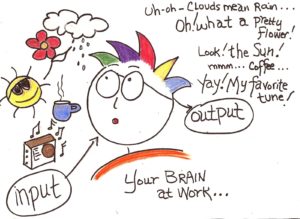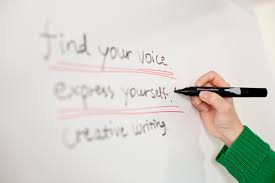
One of the consistent misunderstandings I see amongst parents, other teachers, and even students themselves is how working on creative writing skills translates to improved skills in “serious” or academic writing. Most people seem to consider creative writing “extra-curricular” and therefore not academically important.
However, research has proven many benefits of “extracurricular” study, such as the link between musical study and improved math skills. Similarly, creative writing embeds important skill-building exercises like the medicine in Mary Poppins’s “spoonful of sugar.” Here are some of those lessons.
1. Any writing is good writing
Writing is a ‘practice.’ No matter what the task, whether it’s texting with friends or writing a poem, using words develops the brain just like lifting weights develops muscles. Exercise is a great metaphor because it’s something that many people detest just the way people detest writing. The common advice you see about getting more exercise applies to writing: find a way to make it social, do it in a location that you enjoy, chart your progress, reward yourself.
Creative writing is something that is attractive to many kids in part because of its social character. No one is going to want to read your book report on “Little House on the Prairie” (apologies to my third-grade teacher), but there’s an audience for your Pokemon fan fiction or your poem about autumn. And creative writing shows progress in a pleasurable way. My students have chosen to write everything from an encyclopedic description of sports cars to a NaNoWriMo dystopian novel.
2. Creative writing uses the same skills as academic writing

Good creative writing features specific, appropriate word choice. Good academic writing features specific, appropriate word choice.
Good creative writing features strong, varied sentences, clearly written. Good academic writing features strong, varied sentences, clearly written.
Good creative writing is well-organized and offers the right amount of information to lead the reader through a story. Good academic writing is well-organized and offers the right amount of information to lead the reader through an argument.
Good creative writing makes the writer’s world come alive in the reader’s brain. Good academic writing makes the writer’s argument come alive in the reader’s brain.
But while many students resist “working” on their writing, they are very open to developing their creative writing skills.
3. Creative writing opens the door

Pretty much every reluctant writer I’ve ever worked with has come to me after someone has “taught” them to write. Usually that someone thought that kids need to learn to write the way they learn to make a cake: Give them a recipe, tell them to follow the rules, expect them to enjoy the product.
But that’s not how writing works. For most people, writing isn’t inherently pleasurable, and introducing it as a bunch of rules to be followed to produce a bad-tasting result doesn’t work. It’s like asking a kid to make a cake out of overcooked broccoli—why bother following the recipe if no one is going to enjoy the product?
When kids are excited to share their work, that excitement translates to a permanent, solid base of enthusiasm that fuels enthusiasm for future academic writing.
Forget the work—let’s “play”!
Recently, one of my online creative writing students expressed great pleasure at the end of class for having spent an hour “not learning anything.” I let it slide, happy that he couldn’t see me at my desk, laughing at the success of my pedagogic deception. My students are learning—they just don’t know it.
Comments
3 responses to “The value of creative writing: a spoonful of sugar”
Tastes differ. Some of us find academic writing easier and more fun than “creative writing”. Trying to tell a story in an interesting way when you don’t have a story you want to tell is not fun.
I spend hours a day working on my textbook, but I’d be hard pressed to spend that much time on writing fiction. (I suppose it might be different if I were any good at writing fiction, but that is a difficult skill, and my standards are too high to accept the low level I’m capable of.)
Aha, you would be right at home in my “creative” writing courses! I have had students who are writing encyclopedias, who write reviews of their favorite video games, who write historical accounts… The difference is that they actually choose to write on these subjects. And when students writing in different genres come together and share their work, they often inspire each other to expand their boundaries. I get kids who have only written nonfiction who suddenly come out with a poem, and kids who focus on fiction suddenly getting the urge to write nonfiction. It’s about communication and fun and not about following a list of rules to create a cookie-cutter essay that no one wants to read.
[…] The Value of Creative Writing […]